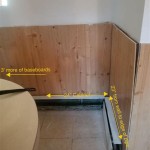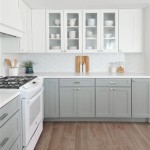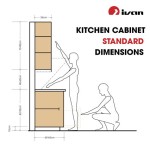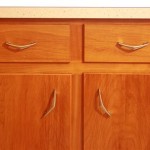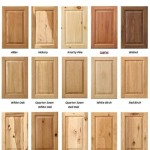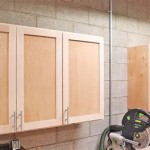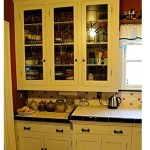How to Remove Paint From Kitchen Cabinets
Removing paint from kitchen cabinets can revitalize a kitchen's appearance, allowing for a fresh coat of paint or a return to the natural wood finish. Choosing the right removal method depends on the type of paint, the cabinet material, and the desired outcome. This article outlines various techniques for safely and effectively stripping paint from kitchen cabinets.
Chemical Strippers
Chemical strippers are a powerful option for removing multiple layers of paint, particularly oil-based paints. They come in liquid, gel, or paste form and work by softening the paint, allowing it to be scraped away.
Key considerations when using chemical strippers include:
- Ventilation: Ensure adequate ventilation as the fumes can be strong and harmful.
- Protection: Wear gloves, eye protection, and a respirator to avoid skin and respiratory irritation.
- Application: Apply the stripper evenly and allow it to sit for the recommended time according to the manufacturer’s instructions.
- Removal: Use a plastic scraper to remove the softened paint, avoiding metal scrapers which can scratch the cabinet surface.
- Neutralization: After stripping, neutralize the surface with the recommended solvent, typically water or mineral spirits.
Heat Guns
Heat guns use high temperatures to soften the paint, making it easier to scrape off. This method is effective for removing thicker layers of paint, especially on flat surfaces. However, caution is crucial to prevent scorching the wood.
Key considerations when using heat guns include:
- Temperature Control: Start with a lower temperature setting and gradually increase as needed.
- Continuous Movement: Keep the heat gun moving to avoid concentrating heat in one spot.
- Immediate Scraping: Scrape the softened paint immediately as it cools quickly.
- Fire Hazard: Be aware of the fire hazard and have a fire extinguisher readily available.
- Ventilation: Ensure adequate ventilation.
Sanding
Sanding is a versatile method suitable for removing thin layers of paint or smoothing the surface after using a chemical stripper or heat gun. Different grits of sandpaper are available, from coarse to fine, allowing for controlled removal and smoothing.
Key considerations when sanding include:
- Sandpaper Grit: Start with a coarser grit and gradually move to finer grits for a smooth finish.
- Sanding Block: Use a sanding block for even pressure and to avoid creating dips in the surface.
- Dust Collection: Wear a dust mask and consider using a sanding system with dust collection to minimize airborne particles.
- Direction of Sanding: Sand with the grain of the wood to avoid scratches.
Citrus-Based Strippers
Citrus-based strippers offer a more environmentally friendly alternative to traditional chemical strippers. They are less harsh and have a lower odor, making them a good choice for those sensitive to strong chemical fumes.
Key considerations when using citrus-based strippers include:
- Application: Apply a thick layer and allow sufficient dwell time, often longer than with traditional strippers.
- Multiple Applications: May require multiple applications for thick layers of paint.
- Effectiveness: While generally effective, they may not be as powerful as traditional strippers for certain types of paint.
Scraping
Scraping can be used in conjunction with other methods, such as chemical stripping or heat gun application, or as a standalone method for removing loose or flaking paint. Different types of scrapers are available, including plastic, metal, and putty knives.
Key considerations when scraping include:
- Scraper Type: Choose the appropriate scraper for the task, considering the hardness of the paint and the cabinet material.
- Angle: Hold the scraper at a low angle to avoid gouging the wood.
- Pressure: Apply even pressure to avoid damaging the surface.
Cabinet Refinishing After Paint Removal
Once the paint has been removed, the cabinets can be refinished. This may involve sanding to smooth the surface, applying a stain or paint, and sealing with a protective topcoat. The specific refinishing process will depend on the desired final look and the type of wood.
Choosing the right paint removal method and following proper procedures will result in a beautifully restored set of kitchen cabinets. Always prioritize safety by wearing appropriate protective gear and working in a well-ventilated area.

How To Strip Paint Off Kitchen Cabinets And Furniture

An Easier Way To Remove Paint From Wood

An Easier Way To Remove Paint From Wood

How To Strip Paint Off Kitchen Cabinets And Furniture

How To Strip Paint Off Kitchen Cabinets And Furniture

Stripping Cabinets Before Painting Diy Me And Reegs

How To Strip Paint Off Kitchen Cabinets And Furniture

How To Strip Paint Off Furniture And Kitchen Cabinets

How To Strip Paint Off Kitchen Cabinets And Furniture

An Easier Way To Remove Paint From Wood
Related Posts

